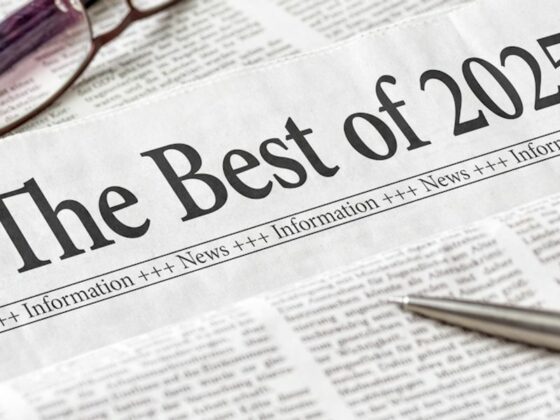Josiah: Today, McKinsey published a very insightful research-driven report on the state of tourism and hospitality. And in this episode, we’re going to be learning about the trends, market changes, and opportunities you need to know as a hospitality provider from one of the authors of this report, Jasperina De Vries.
Josiah: You have this brand-new report that just came out. Tell us a little bit about the report. What was the origin of you and your colleagues putting this together?
Jasperina: Yeah, I mean, how it came about, it was really at a point in time where we thought, okay, it’s time to take stock in the midst of the pandemic recovery, of course, to see where things are at. We wanted to build a perspective on the key trends that are really shaping up the recovered tourism industry, and also to help the industry to cover strategies to capitalize on those opportunities. The other thing that we were keen on from the get-go is to not, let’s say, aggregate a collection of best of existing insights, let’s say. So we really utilized, I would say, a wealth of data sources to bring the report together. So there is a traveler survey that includes 5,000 global respondents, which I think uncovers quite some interesting detail on traveler preferences. as well as, you know, we leveraged, of course, economic forecasts and outlooks, etc., but also WTTC spend data, geospatial data, travel reviews, etc., to really build out a nice and comprehensive report.
Josiah: Amazing. Well, in our conversation, we’re going to get into some of the things that you found in that. But maybe to set the stage, I wonder if we could speak for just a few moments about where we are in the global travel and hospitality industry. Of course, it’s a bit of a cyclical business. We’ve gone through a lot over the past five years. Where are we today?
Jasperina: Yeah. Well, travel is on its way to a full recovery by the end of this year. So, actually, the expected $8.6 trillion that represents in traveler spending roughly represents 9% of this year’s global GDP. That’s a lot of money. That’s a lot of money. And it’s also, yeah, there’s continued expected steady growth, despite perhaps any outlooks on recessionary context, et cetera, that will continue to grow.
Josiah: So it’s a good time to be in hospitality, I feel kind of with that recovery. But there’s also a lot happening in terms of trends. You referenced surveys, you referenced a number of different data sets that you’re looking at. I guess I’d be curious to hear, you know, kind of what are some of these growth areas or sort of meta trends that you see happening now that are going to shape our industry over the years ahead, maybe the decade ahead?
Jasperina: Yeah. And we should dig into a couple of them later. But I think, indeed, you’re right, the steady growth expectations are clear. And then within that, I think that’s the gist of our research, just clearly proliferating travel patterns across, right? So in how the different generations book and experience a trip, in the luxury travel space, for example, even in how destinations are approaching the travel growth and managing that. So I think it’s really for this next decade for the industry to really get to know the pockets within your guest segments inside out to go beyond this kind of one-size-fits-all offering and really tailor your offering to your guests. And that can be around addressing those generational differences, Geographical source market differences or, you know, luxury, for example, and be nuanced in that going forward.
Josiah: Let’s talk about some of these segments and differences a little bit, because I think sometimes when I hear some people talk about trends, it seems so high level that it’s hard to tell if we’re talking in 2024 or 1994, but this is a very dynamic industry. There are so much nuance to it. One of the things that the report touches on is maybe some perceptions that people have about travelers. that should be re-examined. And I wonder if you could speak to some of those, just to help our listeners understand that maybe we need to re-examine and re-evaluate some of this thinking that we’ve had around, this is my market, this is demand out there.
Jasperina: Yeah, exactly. Yeah, so just to highlight a few, because I think there are many more in the report, but I will mention a couple, for example, on luxury, right? I think what we see there is, of course, the preconception or the tale is that all travelers are wealthy. Well, actually, there’s also a big sort of aspirational spender category, we call them the aspirational luxury traveler, that is perhaps less wealthy, but really treats luxury travel as an aspirational example. That’s a nuance I think that especially luxury brands will want to take into account when they think about their offering. A second one is on age, for example, and generations. There is, of course, the preconception that older traveler segments spend more. In the end, that is also true, net-net. But you also see that, for example, in luxury, 80% of that market is made out of people under 60. So there is the sort of count of travelers that matters and the spend that matters. That’s where you want to be precise, I think, in who you want to target and how you want to make the most out of those markets.
Josiah: I appreciate you sharing that. And I think one of the things that I enjoyed in the report was how you even kind of went further beyond ages into these sort of emerging traveler archetypes if you will. I wonder if you could speak to some of the behaviors or preferences within these groups that our hoteliers that are listening may not be aware of because I think this is the level of detail that you need to get to when you’re understanding markets and opportunities. It includes the ages, but it actually goes a level deeper and you did do that. What are some of these archetypes that hoteliers should be aware of?
Jasperina: We did a survey based on 5,000 respondents, and took some machine learning approaches to cluster them and see what really goes on under the hood, also on features and demographics that you would not necessarily manually identify as making a difference. And indeed, that led to those seven archetypes that you referred to. So for example, the strategic spenders, the adventure seekers, et cetera. So we can talk about how they are different. But I think the additional point we’re making in our report is that this is also something that Hotelier should be doing much more and much more often on their own customer base and on customer data, because we can do it on 5,000 travelers and come up with really interesting nuances, I think, that will benefit the audience and those that will read the report. But imagine that there’s hundreds of thousands of customers or millions of them that you have in your customer database. And even though the initial hypothesis is often that you don’t necessarily have a ton of data, because of course, these guests don’t spend and stay with you every day of the year, there is still a ton of value in in the data that you do have, and there’s privileged insights on them that you do have with your data at your fingertips. So for us, what that, for example, led to is some of the insights on the strategic spenders, for example, who those are, what they will and will not spend on, right? splurging on experiences, but saving on accommodation, flights, willing to add additional stopovers, all that, those kinds of characteristics. The trend conscious jet setters who are ready to spend and that are very attentive to recommendations from friends and social media. And then five or six other archetypes, indeed, that we got to know quite intimately through this research.
Josiah: That’s great. And I encourage our listeners to read the full report because I found it really interesting as you get into detail of these. But I also appreciate you sharing behind the scenes because I think this is a takeaway for our listeners as well. And really, you mentioned using machine learning to aggregate all these data, look at similarities, and parallels. I think there’s value in looking at maybe just these general global archetypes. But as you pointed out, there could be a lot of value in looking at your own customers because every business is different. Every brand has a unique segment it’s serving. And within those, it sounds like even if you’re a brand with a very specific point of view or kind of value proposition, there’s probably a whole bunch of segments within that that you should know about and should cater to.
Jasperina: Yeah, exactly. I think you don’t necessarily have a ton of data. I think there’s, there’s a lot of what we call like hypothesis driven testing methods to circumvent that. And I think the cutting-edge data strategies are not always necessary to get started, right. For example, One of my clients is looking to increase direct bookings. I think that’s an aim for many of your listeners. And so they do that by looking within clusters of customers that have already a high degree of direct bookings. So that’s the cluster that you’re first isolating. And then, within that cluster, you start nudging those that do not yet book directly, which are the lookalikes. This is a lookalike methodology in the analytics language. And so these are things that you can easily do also within your own, and this is for direct booking, but you can also do it for up and cross-sell that you identify those folks who do a lot of that. And you identify the lookalikes who don’t do that yet, but that you can nudge into that type of behavior. And then of course, that’s the identification step. And then you go beyond by being able to really sell the type of offer through attribute-based selling and personalized content to tailor and to give them the right offer.
Josiah: That’s so fascinating to me. And I think that’s a big opportunity for hoteliers to take this sort of very analytical, data-driven approach to commercial strategy. I think the best chief commercial officers I see in hospitality brands are doing this. And it sounds like you can kind of work with them to help them think about what this looks like for their business. I would like to stay on this moment, this theme a moment longer, though, of just understanding travelers and customers of hotel companies. The report talks about travelers from newer source markets or source markets with projections for growth like India and Southeast Asia. People coming from these places have high expectations when it comes to tech. And I wonder if you could speak a little bit more to just, I guess, this general opportunity that you see and what you’re seeing out there in the market.
Jasperina: For sure, so I think there’s a large group of new travelers coming online in the next few years. You already mentioned China and India; I think also Eastern Europe is a source market in which we expect high growth. That also drives, in the end, the expectation that the international share of travel spend is about to grow. One of the things you’ll read about is that domestic travel remains the bulk of travel spending towards 2030. At the same time, international trips, the share of that will rise because indeed there’s interesting, yeah, there’s up and coming source markets to say that are starting to travel and cross borders.
Josiah: I’m curious, from some of these markets, are there specific elements of innovation or technology that hoteliers should be thinking about or prioritizing? I know it’s a broad question given the wide range of these source markets, but I’m curious if it’s an increased focus on mobile-enabled technologies, is it something else?
Jasperina: Well, I would say you can take cues from the source markets and what’s happening there. So, for example, in the report, we talk about how some of the major hotel chains in South Korea have really looked at accepting payment methods that are popular in their neighboring countries. So I think that’s a good one to make sure that you actually suit the preferences of the travelers that will come your way. This might also include offering language support, and customized services to pay for the cultural preferences.
Josiah: So the report talks a lot about kind of the global travel market, international travel. It also highlights, though, how much travel takes place close to home in domestic markets, right? And I think during the pandemic, at least in the U.S., there was a big focus on hospitality brands thinking about these sorts of drive-to destinations. It sounds like this is still something hotel owners and operators need to be thinking about is their local domestic markets. I wonder if you could speak a little bit to some of the opportunities that you see in this area.
Jasperina: Yeah, I would say two things. One is in order to cater to the domestic traveler. It’s really about highlighting also the things in your direct surroundings or on your property that make it unique and make it worthwhile a visit. So, for example, enhancing the national heritage awareness or folding in one-off domestic destinations into itineraries that you’re offering and that you’re participating in. There’s an example in France that we mentioned in the report where one hotel chain really capitalizes on the historical properties that it has. And that is not only attracting the international traveler, but it is really also a reason for French tourists to come and stay. So hotels really promote the cultural and historical aspects of their location. I think the second thing here I would say is that the realization is already part of an ecosystem, especially for like upcoming destinations or growing destinations. We see our tourism authority clients taking on really a more active orchestration role, but I think also for hotel chains, for example, the realization that you’re part of a bigger ecosystem and you want to actively share what you’re hearing from your customers, from your guests, that you are actively working with, whether it is experienced providers, transportation providers, tourism authorities, etc. That’s something where we see a lot of the change happening in the different locales and different destinations.
Josiah: This is really interesting to me because there’s another element to the report that talked how much engagement happens before the trip. It stood out to me as a really interesting opportunity for hoteliers in the sense of everything that you described, whether it’s working with local tourism boards if it’s thinking about programming, or thinking about how you communicate the benefits of visiting some of your properties. It seems this is a really big opportunity to engage people, even from a guest experience perspective. I’m curious about your thoughts of that, but it seems a lot of happiness. I mean, I know this for myself when I’m planning to go on a trip, a lot of the fun is before the trip, but it seems like from a commercial perspective as well, investing in this sort of engagement education is a big opportunity.
Jasperina: Exactly. Yeah. So on the one hand, this may be one of the preconceptions that you were mentioning earlier. You might think the technology makes everything easier and travelers want to get it over with and just sort of also try to automate the trip planning. But I think the opposite is true. That’s something we clearly saw and heard. There’s definitely still a point here for travelers who want to spend time planning their trip. Of course, different uses of technology and channels to do so. For example, we saw that using AI and Gen AI is definitely also starting to become a thing, although the younger generations also state that only 27 of them have been really trying this, it’s growing. So that stays, that remains a activity in itself, I would say, to get ready for the trip and get excited. And so I think there’s a lot more that you can do to make the most out of that if you’re a hospitality provider. Sometimes, we have conversations with clients who say, for example, in the tourist and experience space, who say, yeah, a lot of the spending decisions end up happening while on the trip, for example, and during the stay. That may be true, but at the same time, these travelers have been browsing TripAdvisor, your website, other channels, maybe not making a transaction before yet, but really orienting themselves and getting ready for it. So I think there is a ton of value in making sure that you have online channel presence to really help people get ready to make the most out of their trip.
Josiah: Your report closes with advice for people in the hospitality and travel industry to stay on the leading edge of innovation. I wonder if we can close our conversation talking about that a little bit. Specifically, one of the points was around cross-selling and unbundling and cross-selling. And hearing you just talk about what you mentioned there of so much so many purchases happening in destination, on site, this seems to be a big opportunity of not looking at selling or I guess the commercial strategy being over just because you have the booking. It seems like for hoteliers, they should be thinking this presents a whole bunch of opportunity.
Jasperina: Right. And this concept of what we call attribute-based selling is starting to proliferate more and more in the industry now too. It, in essence, indeed, allows your customer to mix and match, almost, and make the most out of their booking, their preferences for their next trip. That is, on the one hand, a very technical conversation in how you enable that. At the same time, it’s also about how you market. So we see a lot of our clients already piloting also Gen AI to easily produce more marketing content. That’s where we will see a lot of development in the next few months and years to come in order to do a lot more precision messaging and get your messaging, your offering out there.
Josiah: Well, what I love about this report is you emphasize the need to have a data-driven strategy. And the data-driven piece is maybe even a little more apparent because early in the conversation, you talked about things that might be obvious but might not be obvious in the sense of processing data sets and understanding relationships. What are these cohorts of customers or segments that I can communicate with? And then you talk about data-driven commercial strategy and attribute-based selling. So data-driven activity is really important, but the strategy piece I think is even more important because I think this is where you’re looking at all these trends, you’re looking at customer behavior, you’re thinking about how you stay relevant, you talk about engaging people before the trip. That’s where it sounds like we’re seeing people, at least today, not necessarily wanting AI just to spit out an answer; here’s the best thing for me. They want to feel a little in control of the process. And so I think this is where the magic will align. This is where the opportunities exist to say, okay, where can AI or a data-driven strategy augment or make this process more enjoyable? while still recognizing these are how people want to interact with technology, how they want to plan their trip, how they want to interact maybe with my teams on-site at a hotel. So it seems like a really interesting moment to be working in hospitality.
Jasperina: You’re spot on, because I think if there’s one industry where AI can really fuel, let’s say, that human-centered experience, which is so, so important, more so than in any other industry, I think It’s here, right? There’s a ton of opportunity for technology to further empower, let’s say, the frontline staff, right? Or to help them be more personal in their next conversation. And so I think that’s where we will see a lot more of a natural blend, let’s say, of the human touch and tech enablement behind the scenes to improve guest experience even more. But I think that’s, indeed, that nicely ties it back, I think, to the overall theme of the report, that travel patterns that we’re discussing, it just, yeah, there’s such a proliferation happening. And I think going towards that, that step of going beyond the one size fits all strategy, I think that’s where a lot of hospitality providers and other players in in this industry are excited about. And here’s how to make the most out of it.
Josiah: Amazing. Jasperina, thanks so much for taking time to talk through all of these exciting trends and opportunities. Where would you point our listeners to learn more about your research and about this report?
Jasperina: So the report is available on mckinsey.com. My coauthors, Matteo and Margo, are also hosting a webinar. I think it’s on June 13th, which everybody’s welcome to join. So some more information on that on our websites.
Josiah: Fantastic. And I’ll include a link in the show notes. Jasperina, thanks so much for taking the time to walk through this.









